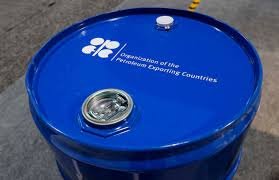OPEC+ to Accelerate Oil Output Hikes in a significant move that could reshape global oil dynamics, with up to 2.2 million barrels per day (bpd) expected to be reintroduced into the market by November. According to insights shared by five sources close to the organization, this decision has been linked to Saudi Arabia’s intention to enforce stricter compliance among members who have breached production quotas.
Strategic Impact of OPEC+ to Accelerate Oil Output Hikes Amid Global Uncertainty
The global oil market had already been surprised in April when OPEC+ announced a larger-than-anticipated output increase for May, despite an environment marked by sluggish demand and declining prices. Analysts were left speculating about the motives, but recent revelations suggest that this was part of a broader strategy initiated by Saudi Arabia, the de facto leader of the group.
This time, it is being suggested that a more aggressive hike in oil production is being planned. This would not only inject a substantial volume of crude back into the global supply but also serve as a corrective measure against member nations violating production quotas.
Rising Output to Address Non-Compliance
The decision to fast-track output increases appears to be driven more by internal enforcement than external market demand. Several member states have reportedly exceeded their agreed production quotas, creating friction within the alliance. By ramping up production, Saudi Arabia is believed to be using market mechanisms to penalize non-compliant countries by lowering prices and thereby reducing the benefits those countries gain from overproduction.
The move is being seen by analysts as a tactical maneuver to reinforce discipline within the cartel. It has been noted that Saudi Arabia has historically adopted similar strategies—flooding the market with oil to suppress prices—whenever cohesion among members has weakened.
Market Reactions and Strategic Calculations
Although official confirmation has not yet been provided, the discussions among OPEC+ members suggest that this new output plan could be finalized in the coming weeks. If implemented, this policy shift would reverse much of the output curbs imposed since the pandemic began, when demand had plummeted and drastic production cuts were needed to stabilize prices.
Oil markets are already showing signs of nervous anticipation. Traders are closely watching for updates, while analysts forecast potential volatility in oil prices depending on how quickly and decisively the new output hikes are executed. If the proposed 2.2 million bpd is restored to the market, a notable downward pressure on global oil prices can be expected, especially if demand remains tepid.
Weak Demand and a Complex Global Landscape
What makes the decision even more complex is the current global demand outlook, which remains uncertain. Although the global economy has been recovering post-pandemic, inflationary pressures, high interest rates, and geopolitical tensions have all contributed to muted oil demand growth.
By pushing more oil into a lukewarm market, OPEC+ risks further price reductions, but the organization appears willing to absorb this cost in favor of long-term strategic stability. Saudi Arabia’s readiness to sacrifice short-term gains in order to maintain cartel discipline is being viewed as a bold and calculated risk.
Internal Politics and Power Dynamics
The internal dynamics of OPEC+ have always been influenced by political and economic calculations, and this move highlights the tensions that exist beneath the surface. With some countries producing above their quotas, a decision had to be made—either through negotiations or economic pressures. Saudi Arabia has opted for the latter.
Smaller producers are likely to feel the most pain from falling oil prices, which may eventually pressure them back into compliance. Meanwhile, countries like Russia, another key player in OPEC+, will have to navigate this delicate rebalancing act while also managing their own geopolitical and economic constraints.
Environmental and Long-Term Considerations
Environmental advocates have expressed concern that increased oil output could undermine efforts to transition to cleaner energy sources. However, OPEC+ has maintained that market stability remains the priority, especially in an era where geopolitical uncertainty and global inflation have made forecasting increasingly difficult.
It is also worth noting that the group’s long-term strategy may still involve gradual reductions and market balancing acts. For now, the short-term focus is clearly on internal regulation and market share protection.
What Lies Ahead for the Oil Market
If OPEC+ follows through with this plan, global oil supply could be significantly altered in the second half of the year. Such a move would come at a time when the global economy is already grappling with inflation, slow growth, and uncertainty around energy transition.
Market analysts are urging governments and businesses to prepare for potential price swings, while also emphasizing the need for energy diversification. Investors, meanwhile, are recalibrating their expectations for oil-related assets in anticipation of OPEC+’s next formal announcement.
Conclusion
The potential decision by OPEC+ to accelerate oil output hikes is being viewed as a strategic response to internal quota violations and external market pressures. Saudi Arabia’s efforts to enforce compliance are likely to reverberate across the oil markets, influencing prices, politics, and global supply chains.
With up to 2.2 million bpd possibly returning to the market by November, the coming months could prove pivotal for both the organization and the broader global economy. All eyes will remain on OPEC+ as its next moves are awaited with anticipation.
